We're celebrating the launch of Edinburgh 900 in Museums & Galleries Edinburgh and across the city with an exploration of an Edinburgh icon: Greyfriars Bobby. Bobby is an enduring symbol of doggy devotion and his haunts are a must-see for visitors to Scotland's capital. A terrier who lived in 19th century Edinburgh and guarded his master’s grave at Greyfriars Kirkyard for 14 years until his own death, Bobby keeps gaining new generations of fans who flock to his statue on Candlemaker Row, visit his grave at the Kirkyard and come to the Museum of Edinburgh to see his collar and other star objects.
Read on to find out more about the Bobby objects Museums & Galleries Edinburgh hold, including some you might not expect.
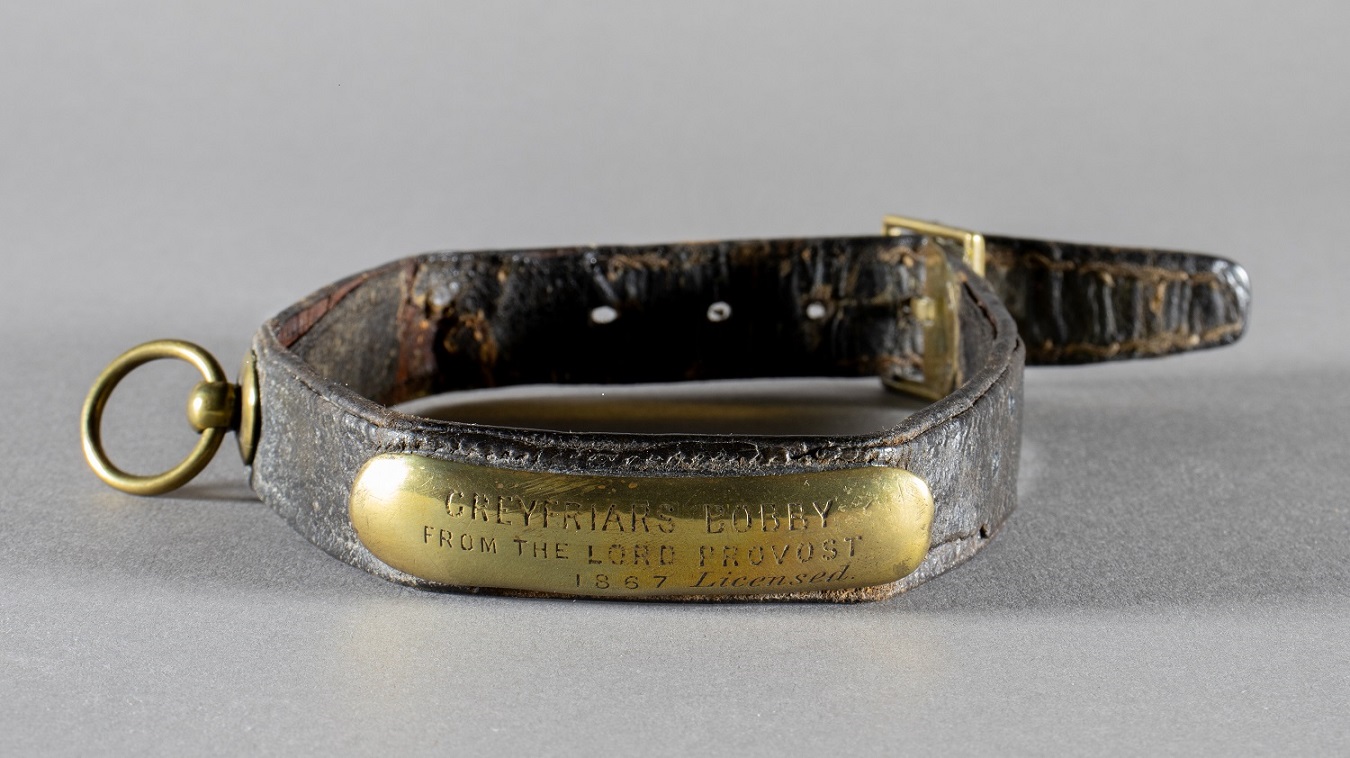
1. Bobby's collar
Bobby lived from 1855 to 1872. After his master, John Gray, died in 1858, Bobby took up a vigil by his grave at Greyfriars Kirkyard. Bobby abandoned his post each day to have dinner at John Traill’s coffee house nearby. He was picked up here in 1867 after being discovered without a licence. Un-licensed dogs were rounded up and often destroyed. Bobby’s graveside vigil had already made him famous by this point, and the Lord Provost of Edinburgh paid for his licensed collar to keep him safe. Bobby’s collar is on display at the Museum of Edinburgh.
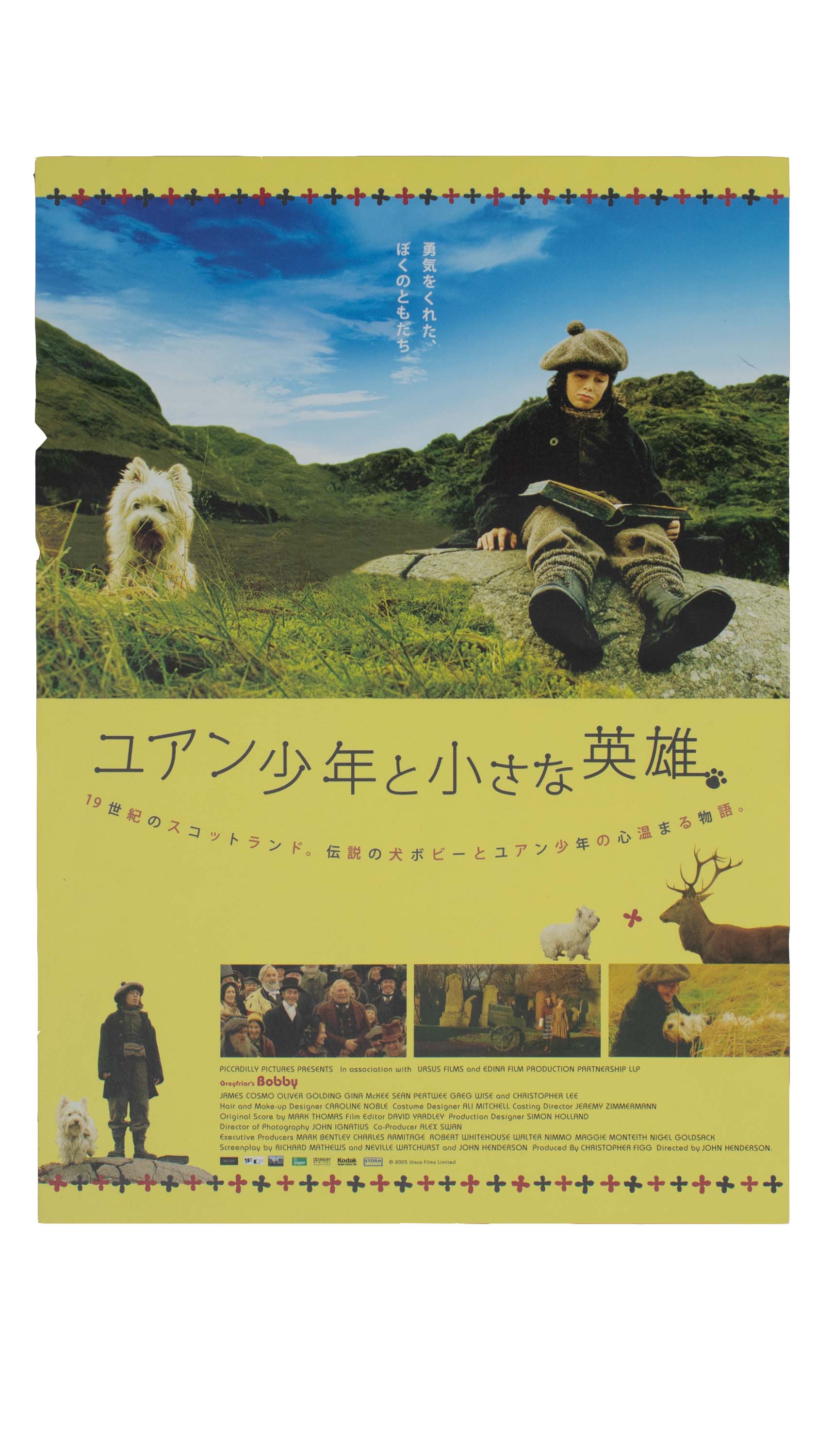
2. Film poster for The Adventures of Greyfriars Bobby
This poster is for the 2005 film The Adventures of Greyfriars Bobby, which brought the Bobby story to a whole new audience. The original Bobby is believed to have been a Skye terrier or perhaps a Dandy Dinmont, but in this film, he appears as a West Highland terrier, the choice supposedly being made so that the dog stood out against the Edinburgh backdrop more clearly. The poster is held in our museum store.
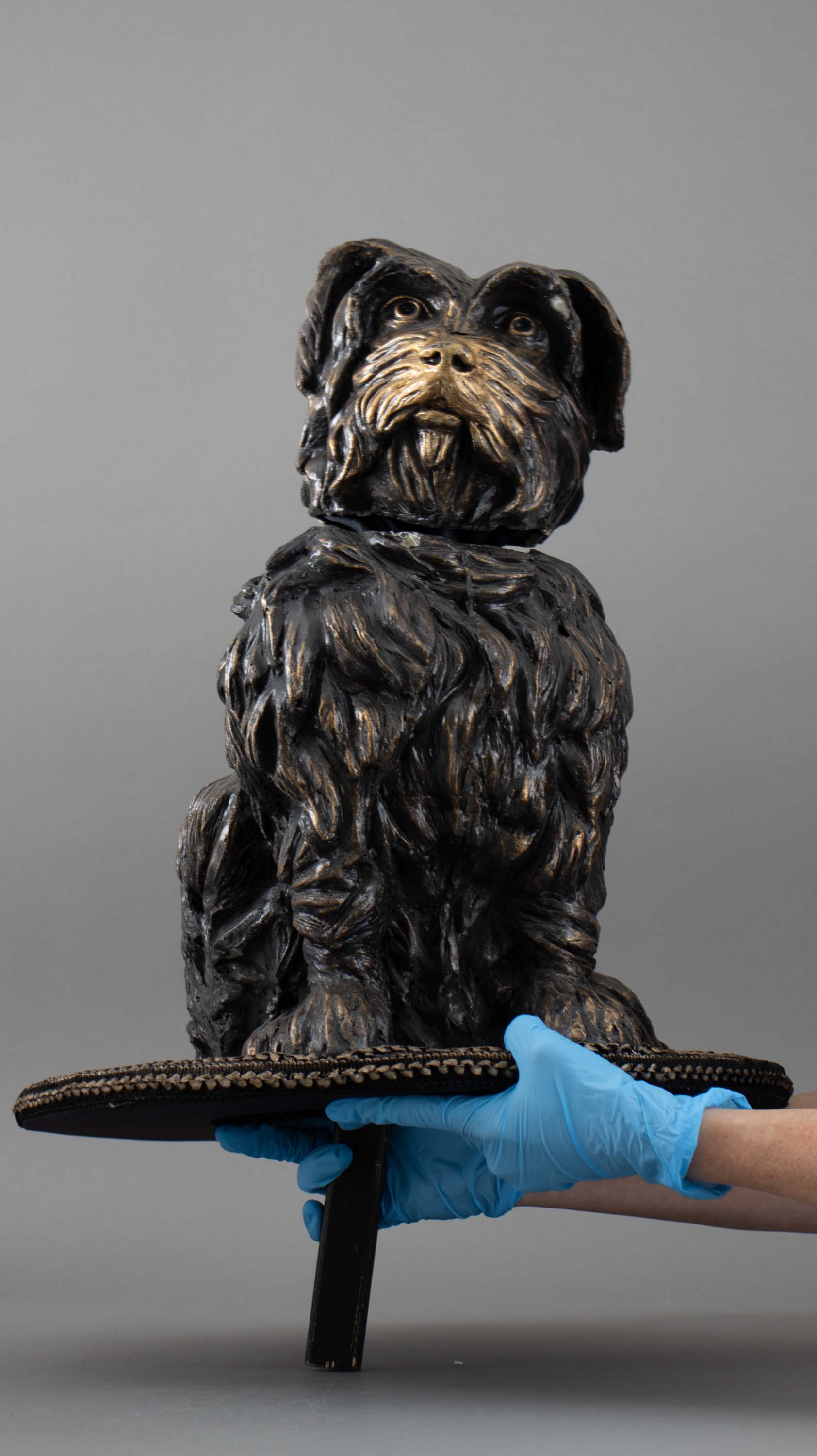
3. Waggle-headed Bobby from the Commonwealth Games
This fibreglass version of the Bobby statue erected at Candlemaker Row was used in the opening ceremony of the 2014 Commonwealth Games. A pole inside the body lets Bobby look around at the crowds. Bobby’s nose is shiny to match the statue, which visitors sometimes rub for luck. Poor Bobby – his nose is best left alone so that future generations can enjoy his statue. The ‘puppet’ Bobby is currently in our museum store.
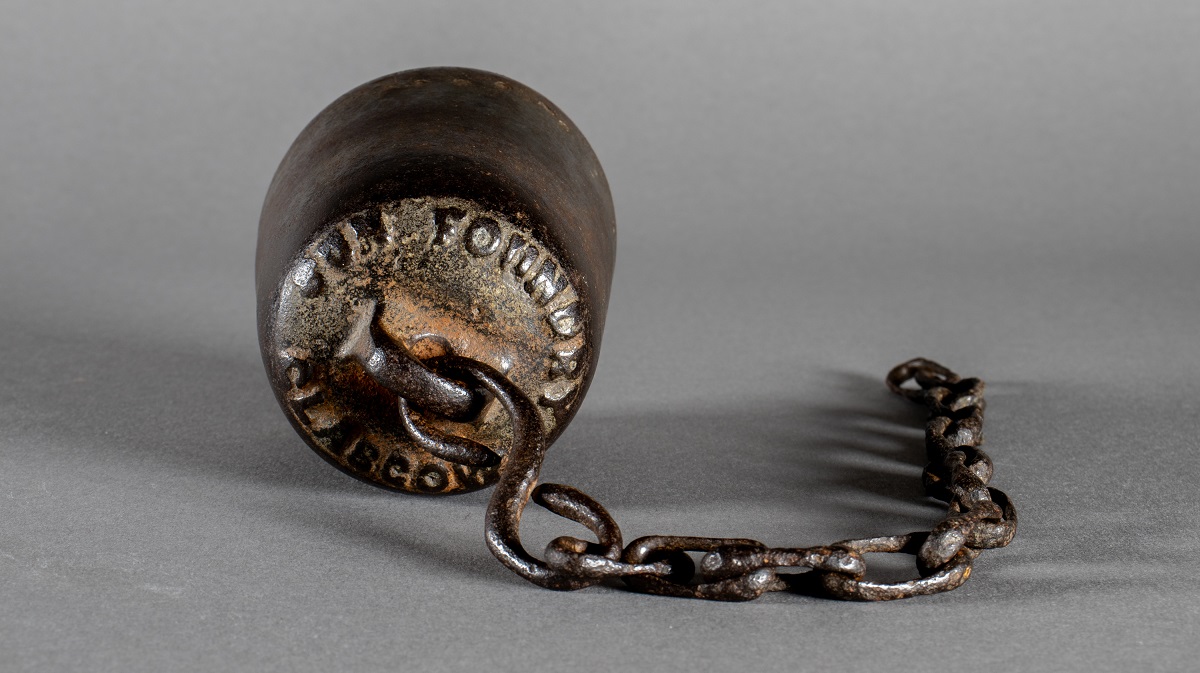
4. Bobby water fountain drinking cup
The Bobby statue on Candlemaker Row was funded by animal advocate Baroness Burdett Coutts. Unveiled in 1873, it originally featured a water fountain with hanging cups. Dogs and humans used the handy water supply until it was shut off for health and safety reasons and the cup came to be displayed at the Museum of Edinburgh.
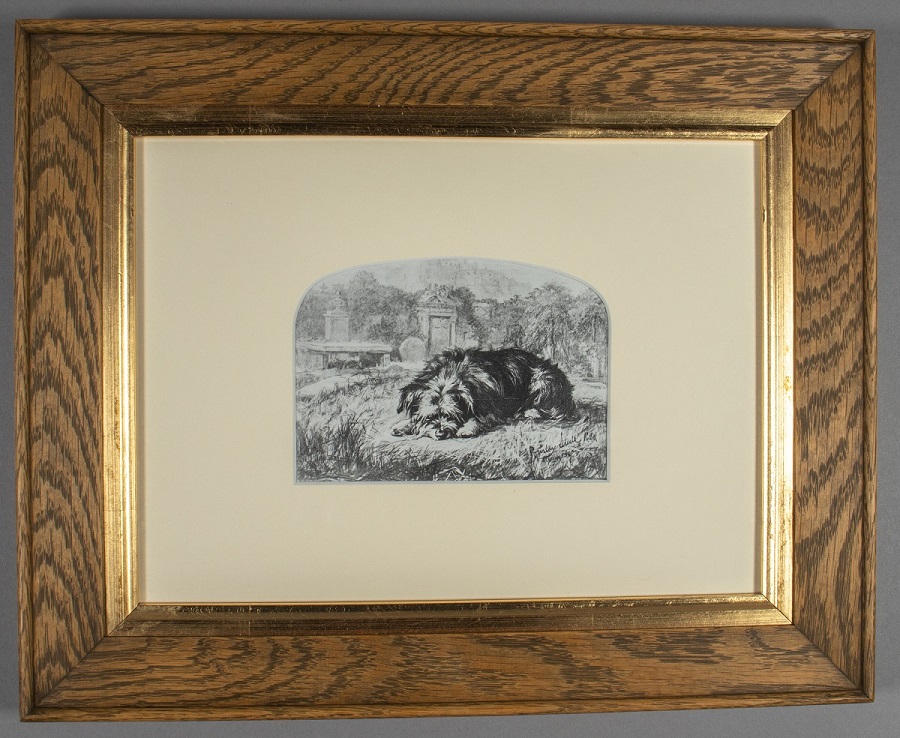
5. Engraving of Bobby gifted to the man who fed him
This engraving of Bobby by Gourlay Steel shows the devoted dog undertaking his vigil for his master. It was given as a gift from the artist to John Traill and can be seen at the Museum of Edinburgh
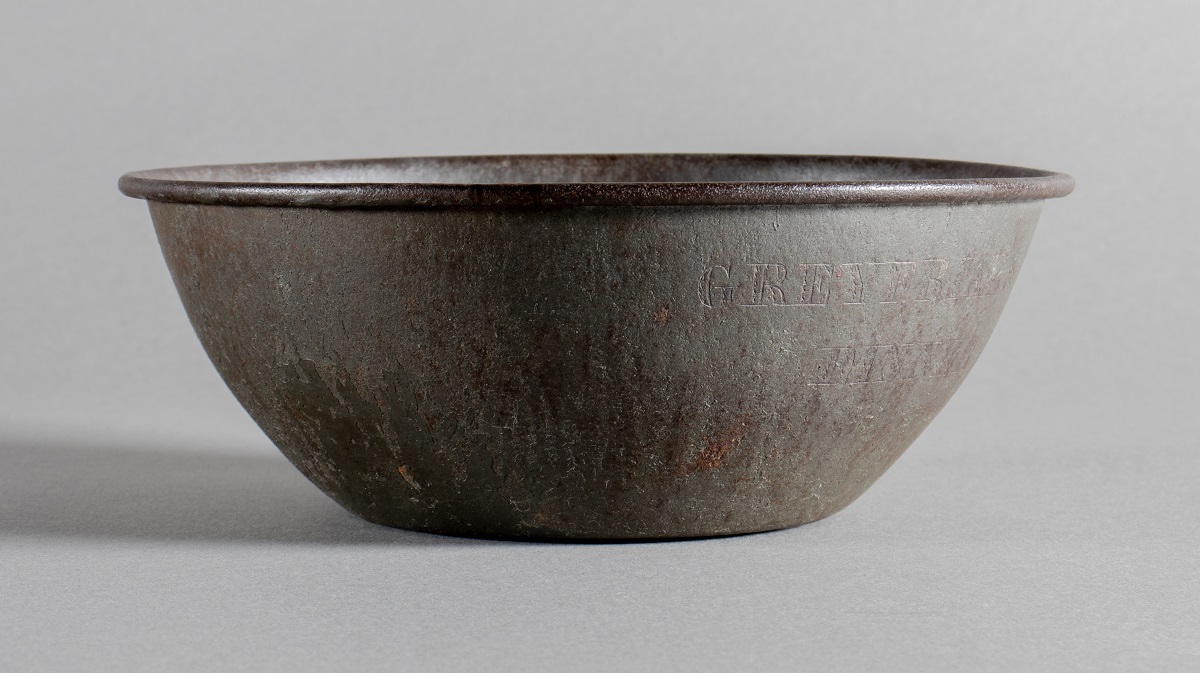
6. Bobby's dinner dish
During his graveside vigil, Bobby was fed by the Traill family who ran Traill’s Coffee House at 5 & 6 Greyfriars Place. He was served his dinner in his own dish, which was donated to the Museum of Edinburgh by the Traill family.
Aspects of the Greyfriars Bobby story may have been debated over time, but overall it tells us a lot about changing Victorian attitudes towards animals and the enduring power of stories of love and devotion.
You can see some of the locations associated with the story of Greyfriars Bobby on Our Town Stories
